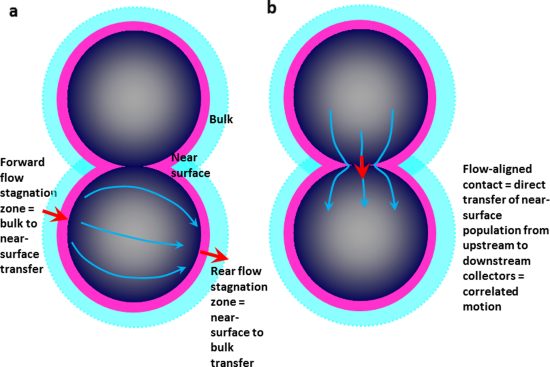
Hilpert, M., W.P. Johnson (2017). A binomial modeling approach for upscaling colloid transport under unfavorable conditions: organic prediction of non-monotonic retention profiles. Water Resources Research. In Press.
Hilpert, M., A.Rasmuson, A., and W.P. Johnson (2017). A binomial modeling approach for upscaling colloid transport under unfavorable conditions: organic prediction of extended tailing. Water Resources Research 53: 5626-5644.
Johnson, W.P. and M. Hilpert (2013). Upscaling colloid transport and retention under unfavorable conditions: linking mass transfer to pore and grain topology. Water Resources Research. doi: 10.1002/wrcr.20433.
Long, W., H. Huang, J. Serlemitsos, E. Liu, A.H. Reed and M. Hilpert (2010). A correlation for the collector efficiency of nanoparticles for clean-bed filtration in packings of nonspherical collectors. Colloids and Surfaces A: Physicochemical and Engineering Aspects 358: 163-171.
Long, W., and M. Hilpert (2009). A correlation for the collector efficiency of Brownian particles in clean-bed filtration in sphere packings by a lattice-Boltzmann method. Environmental Science and Technology 43: 4419-4424.